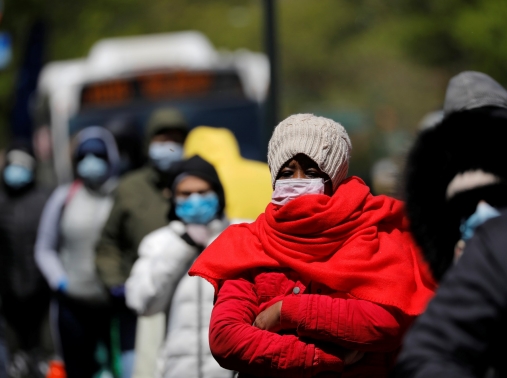|
|
RAND research and commentary on the issues that matter most
|
Jun 4, 2020
|
|
|
James Baldwin famously said, “Not everything that is faced can be changed, but nothing can be changed until it is faced.” It shouldn't require the deaths of innocent Black people to lay bare that our society has not yet faced up to the realities of systemic inequality and structural racism. It shouldn't require the civil unrest of the last week. It shouldn't require a once-in-a-century pandemic that disproportionately affects communities of color.
The consequences are self-evident. We see them in the data we collect and analyze, in the policies and interventions that never stand a chance when considered apart from the tangled web of biases that perpetuate poor outcomes.
Everyone must do more to eliminate racial inequities. At RAND, we will contribute by continuously strengthening our research and analysis on health, education, justice, security, and well-being. We must examine where these areas intersect, listen more to voices that are too often underrepresented, and integrate the historical and structural contexts in which policies have been developed and applied. Anything less would impede our mission to help improve public policy and decisionmaking.
Anything less would dishonor the legacies of George Floyd, Ahmaud Arbery, Breonna Taylor, and so many others.
— Michael D. Rich, President and CEO
|

|
|
People stand in line at Harlem's Community Kitchen and Food Pantry in New York City, May 9, 2020. Photo by Andrew Kelly/Reuters
|
|
One-third of American households have lost income since the coronavirus pandemic began, according to a new RAND survey. And during these difficult economic times, many are struggling to make ends meet. Our survey also found that about 30 percent of households are having trouble paying their bills. These problems are more highly concentrated among low-income households—even those whose income has remained stable are struggling—as well as Black and Hispanic households.
Read more »
|
|

|
|
A man speaks with a library worker after receiving an unemployment form, Miami Beach, Florida, April 8, 2020. Photo by Marco Bello/Reuters
|
|
Since March 15, more than 38 million American workers have applied for unemployment insurance. This has been the biggest stress test of the U.S. unemployment system since it was created after the Great Depression. How has the system performed? According to RAND experts, there have been challenges—including delays and unprocessed claims—but the program is nonetheless delivering timely, targeted cash benefits to laid-off workers. And the foundations of this important safety net appear to be holding solid.
Read more »
|
|

|
|
A waitress serves diners at a restaurant in Alexandria, Virginia, May 29, 2020. Photo by Kevin Lamarque/Reuters
|
|
The effects of COVID-19 will reinforce growing inequality in the United States, says RAND's Shanthi Nataraj. First, low-income workers are more likely to have lost their jobs in the pandemic—and less likely to have savings to fall back on. Second, since higher-earning Americans are more likely to own stocks, the widening gulf between a rebounding stock market and faltering business performance will only widen the wealth gap. That's why it will be important to invest in retraining workers and helping business owners rebuild after the crisis, Nataraj says.
Read more »
|
|
|
In the first installment of RAND Remote, our COVID-19 briefing series, researchers Jennifer Kavanagh and Todd Helmus answered questions about disinformation during the pandemic. They discussed why disinformation is so prevalent right now, how people can navigate a challenging information environment, and how China, Russia, and Iran are spreading inaccurate information. Kavanagh and Helmus also described RAND's research initiative aimed at countering Truth Decay, the diminished role of facts and analysis in American public life.
Watch the video »
|
|

|
|
Photo by AndreyPopov/Getty Images
|
|
More than two million people in the United States need treatment for opioid use disorder. And while an increasing number of individuals are getting treatment, less than 20 percent receive prescriptions for effective medications such as buprenorphine. Barriers to receiving buprenorphine include inadequate supply, a lack of clinicians who can provide it, and stigma related to drug use. A new RAND study finds that telehealth could help overcome these challenges. In the midst of the pandemic, this approach may become even more important.
Read more »
|
|
|
You already get the latest insights from RAND in your inbox. Why not your earbuds?
Policy Currents is available as a weekly podcast. Five minutes, every Friday.
Subscribe now »
|
|
|
|
|